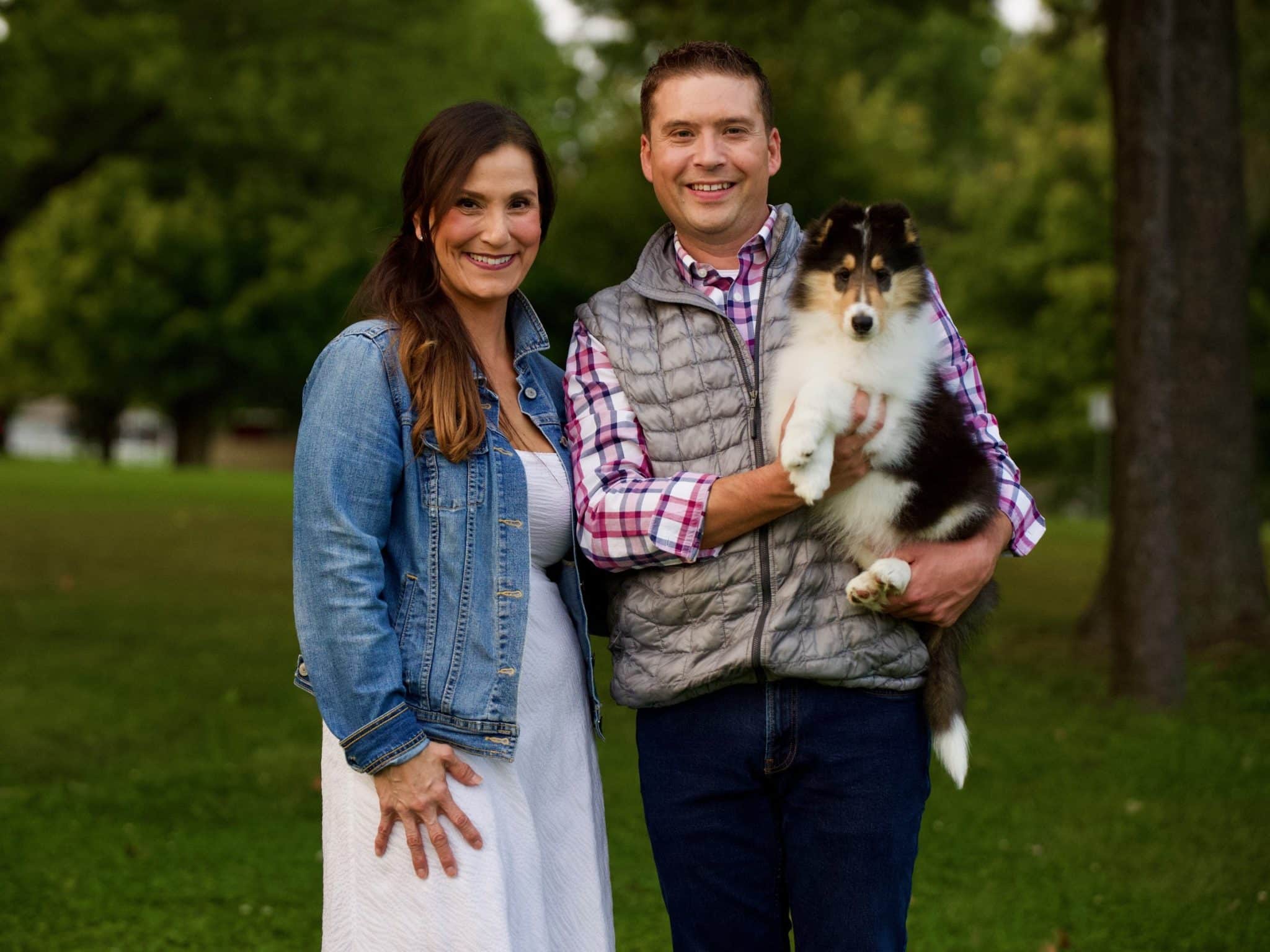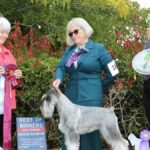Interview with Matt & Anita Stelter, Breeders of Wyndlair Collies
Please tell us a little bit about yourself. Where do you live? What is your breed? What is your kennel name? Do you have a website? How long have you been in dogs? How long have you been breeding dogs? Who are some of your best-known dogs?
We both began breeding and showing Collies as children and carried our purebred dog passion into adulthood. We are now approaching 20 years of marriage, and we continue breeding (and judging) Collies together. Our breeding program has often taken a backseat to our family life as we have two teenage children who keep us very busy with their athletics and activities. However, we still try to have 1-2 litters each year and never miss our National Specialty.
Highlights of our breeding program include the No. 1 ranked littermates, GCHB Wyndlair Point Given and the record-setting GCHP Wyndlair Cherokee Vindication, as well as the Top-Winning White Collie in Breed History, GCHB Wyndlair Classique Incandescent, ROM. Currently, we are excited about our young GCH Wyndlair Star Spangled, who is already a Best in Show, National Specialty Award of Merit, and multiple Group One & BISS winner.
As a Breeder, can you share your thoughts on your breed today? Is breed type strong? Are there things to be concerned about? Are there any health-related issues? Have you worked with breeders overseas? Are pet homes typically available for your breed?
Unfortunately, the Collie breed is not in a particularly good position today. While there have been advances in health research and testing, we are seeing very few exceptional breed specimens anymore. Whether that is due to the loss of so many longtime breeders, disappearing foundational bloodlines, or a general lack of understanding of correct breed type—or a combination of all factors—it has become difficult to sustain the quality that our breed has had in the past.
We put a lot of care and effort into trying to produce the finest puppies possible for our buyers. While we do not sell many show prospects, we are fortunate to have very strong demand for our pet puppies. That demand is driven almost entirely by our website, which was built using the Better Breeder Institute’s “Pyramid for Website Success” framework. Our website receives significant traffic from puppy buyers, educates them about our breeding program, and provides us with a steady stream of qualified applicants.
As an Exhibitor, can you comment on recent entries in your breed? Are majors available in your area? Does your breed often participate in Companion and Performance events? How can newcomers in your breed be encouraged to join the sport of dogs?
Even in a breed where most of the quality dogs are shown exclusively at specialties, entries are down significantly due to too many shows and too many dogs earning their championship titles. The lowered point scales allow dogs that would not have finished in the past to now finish with ease.
Attracting new fanciers into our sport is difficult, but it’s something we all need to be mindful of. We’ve never had fewer aspiring breeders, and it is all of our responsibility to nurture those who will have to fill our shoes.
What are the biggest challenges facing the dog show community as a whole and how can we address them? And finally, what are some of the positive changes you’ve seen in your breed and in the dog show community as a whole over the past decade?
The number one driving force behind the dog show world is its breeders. However, the purebred breeder community is facing challenges greater than anything it has encountered before. The loss of longtime breeders, shrinking gene pools, and eroding breed type are all concerning. Popular sire syndrome is prevalent in many breeds as the number of high-quality stud dog options dwindles. Additionally, we now face increasing societal, economic, and municipal challenges that make sustaining a breeding program difficult.
So, how are we going to overcome this unprecedented adversity? It will require conservation dog breeders to stop viewing their fellow breeders as competitors and rivals, and begin embracing them as partners and collaborators. Successful breeding programs will no longer be able to operate on an island. Instead, it will take all of us coming together to pull in the same direction to ensure the preservation and advancement of our breeds.








